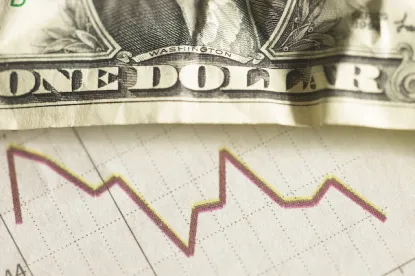NYSE Arca’s proposal would use a two-part test to identify aberrant prices in trades of exchange-traded products and then warn the market of such trades in an effort to deter further pricing dislocations.
NYSE Arca, Inc. (NYSE Arca) recently filed a proposed rule change with the US Securities and Exchange Commission (SEC) that would allow NYSE Arca to flag aberrant trades in exchange-traded products (ETPs), including exchange-traded funds that are structured as registered investment companies, exchange-traded notes, and other exchange-traded vehicles (e.g., certain commodity pools).[1] This policy would be substantially similar to a policy that NYSE Arca has had in place since 2009 for equity securities generally.[2]
In its proposal, NYSE Arca indicates that price dislocations can occur as a result of large orders, reductions in liquidity, or trading or pricing errors by individual market participants. NYSE Arca’s proposal would allow the exchange to add an “Aberrant Report Indicator” to any ETP trade report that reflects a price that NYSE Arca believes to be inconsistent with the prevailing market. These trades would still be valid and would not be unwound. Further, NYSE Arca would inform the particular ETP issuer each time it appends an Aberrant Report Indicator to a trade in that issuer’s ETP.
How Will NYSE Arca Identify “Aberrant” Trades?
In order to identify such trades, NYSE Arca would use two different tests:
First, when the trade price or “Reference Price”[3] for a trade is below $100, NYSE Arca would flag those trades that were at least $0.50 away from the previous trade or the Reference Price. When the trade price or Reference Price for a trade is above $100, NYSE Arca would flag those trades that were at least 50 basis points away from a previous trade or valid Reference Price.
Second, NYSE Arca would look at the flagged trades and consider a broad range of factors to determine whether a trade is truly inconsistent with the prevailing market. These factors would include, among others, changes to the index the ETP is tracking, shifts in creation or redemption of shares, corporate actions, general market volatility, system malfunctions or disruptions, ETP credit risk changes, and material news about the market in which the ETP primarily invests.
If an Aberrant Report Indicator is appended to an ETP trade, then NYSE Arca would encourage data recipients and vendors to not use the trade in calculating the day’s high, low, or last sale price. NYSE Arca would provide vendors and data recipients with an explanation of the aberrant trade policy and of the potential deleterious effects that can result from including such trades in certain calculations. Such trades may also be removed as that trade’s “designation as the last sale.”
Why Flag Aberrant Trades?
NYSE Arca is not the first to propose changes in order to ensure that ETP trade prices accurately reflect the market.[4] The price at which ETP shares are traded on the exchange can deviate from the ETP’s underlying value. According to NYSE Arca, anomalous prices can overshadow the ETP’s overall performance, overly emphasize short-term market impacts, and influence statistics calculated by third parties. This can then lead to investor confusion, increased market volatility, and further price dislocations. Thus, NYSE Arca’s proposal aims to protect investors and the public interest by alerting investors and market participants of the potentially aberrant nature of a particular trade, thus seeking to prevent a single aberrant trade from disproportionately affecting the total mix of market pricing information with respect to a particular ETP without halting or unwinding the trades in question.
Comment Period
Interested parties should submit comments on NYSE Arca’s proposed rule on or before December 9, 2015. As of the time of publication, one letter had been posted by the SEC with respect to this proposal.
[1] See Securities Exchange Act Release No. 34-76431, (Nov. 12, 2015). The SEC release notes that in 2014, ETPs listed on NYSE Arca represented more than $1.89 trillion in assets under management.
[2] See Securities Exchange Act Release No. 59937 (May 18, 2009).
[3] Unless the circumstances suggest that a different Reference Price would be more appropriate, the Reference Price is either (a) the national best bid or offer for the ETP if the ETP’s primary market is open at the time of the trade, or (b) the first executable quote or print for the ETP on its primary market after execution of the trade in question, if the ETP’s primary market is not open at the time of the trade.
[4] See Luis A. Aguilar, Commissioner, Securities Exchange Commission, How Can the Markets Best Adapt to the Rapid Growth of ETFs? (Oct. 15, 2015).



 />i
/>i

